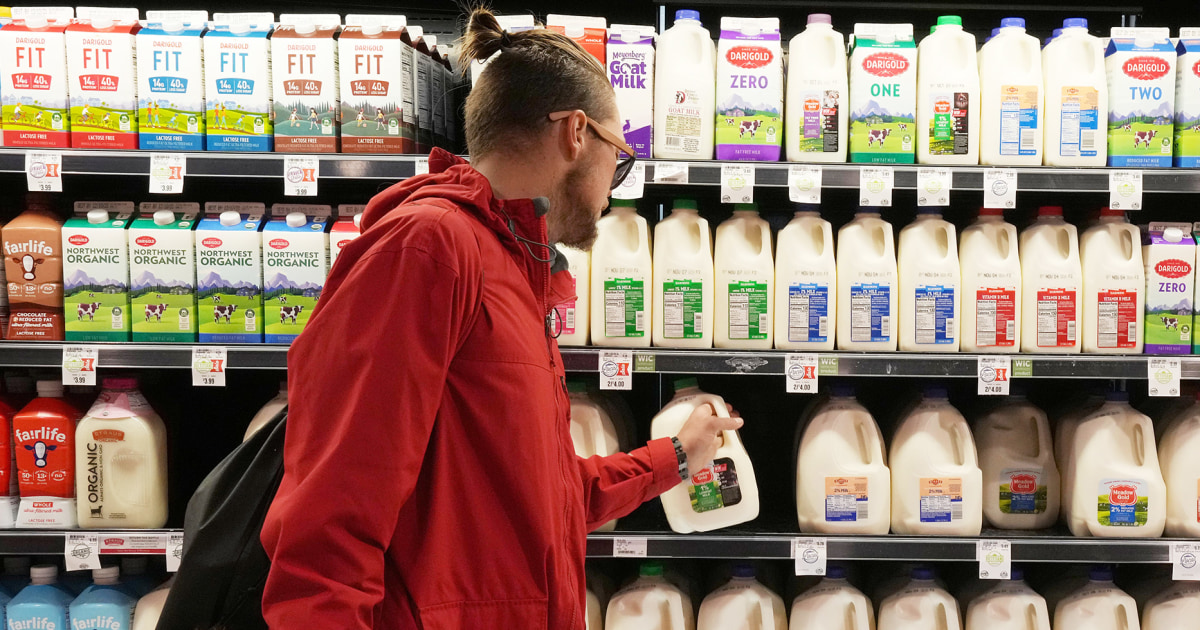
The Food and Drug Administration said Tuesday that fragments of the bird flu virus had been detected in some samples of pasteurized milk in the U.S. While the agency maintains that the milk is safe to drink, it notes that it is still waiting on the results of studies to confirm this.
The findings come less than a month after an outbreak of the H5N1 strain of bird flu was found, for the first time, in herds of dairy cows in several states. It has since been detected in herds in eight states.
The FDA has been working with the Centers for Disease Control and Prevention and the U.S. Department of Agriculture to investigate the outbreak.
The fragments of the virus were found while testing samples of pasteurized milk, the FDA said. The testing method, called PCR testing, looks for bits of genetic material; a positive result doesn’t mean that live, infectious virus has been found.
“Based on available information, pasteurization is likely to inactivate the virus, however the process is not expected to remove the presence of viral particles,” the agency said in a release that it plans to make public later Tuesday. “To date, we have seen nothing that would change our assessment that the commercial milk supply is safe.”
The FDA is specifically testing whether pasteurization inactivates bird flu in cow milk. The findings will be available in the “next few days to weeks,” it said.
As a part of its testing, it will use so-called egg inoculation tests — considered the gold standard for determining if a sample is infectious — in which a chicken egg is injected with a small amount of infected milk and monitored to see if active virus begins to replicate.
Michael Osterholm, an infectious disease expert and director of the Center for Infectious Disease Research and Policy at the University of Minnesota, said he was not surprised by the preliminary findings.
“If you tested most milk, you’d find E. coli and listeria and other things in it, too, but they’d all be dead. Pasteurization doesn’t take them out, it just kills them,” he said. That is, dead particles are unlikely to cause a person to get sick.
“I wouldn’t have any problem drinking milk tonight from an influenza standpoint at all,” Osterholm said. “My grandchildren could drink the milk tonight.”
But there has been a scarcity of information on the matter coming from the USDA, he said. More data is needed to fully understand what’s going on with the current bird flu virus in dairy cows.
“We have a need for a lot of additional information that hasn’t been forthcoming,” Osterholm said. “We don’t know the epidemiology on these farms. We don’t know how many farms, how many samples. We have been very concerned.”
The FDA said it has also recommended that milk producers take precautions when discarding milk from sick cows so that the discarded milk does not become a source of spread.
One person has been infected during the current outbreak. The person, a dairy worker in Texas, had a mild case and only developed conjunctivitis, or pinkeye.
A senior official at the CDC also said the agency is monitoring the situation for signs of unusual illness in people and has not seen any beyond the Texas case.
Still, the virus remains a cause of concern among health officials, given its particularly high mortality rate of around 50%. Bird flu doesn’t spread easily from person to person, but there’s worry that it could mutate as it spreads among cows to a version that spreads more easily among people. So far, there’s no evidence indicating that has happened, according to the CDC.






